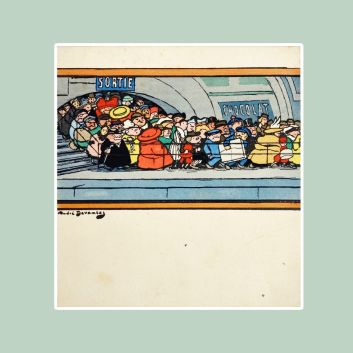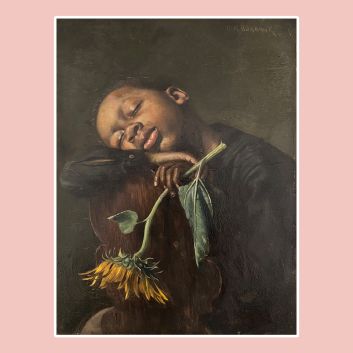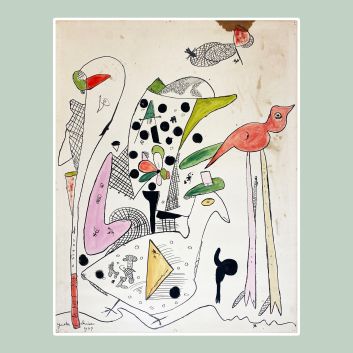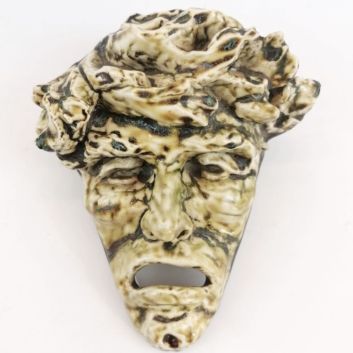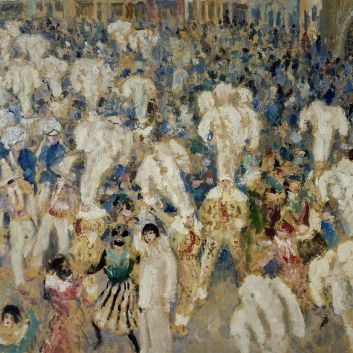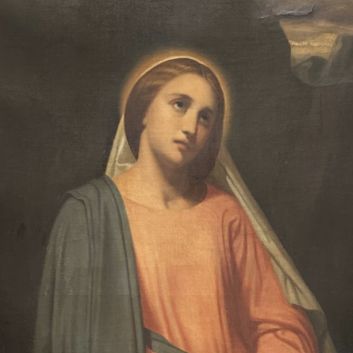Cote et valeur des oeuvres, dessins, peintures de Henry de Groux
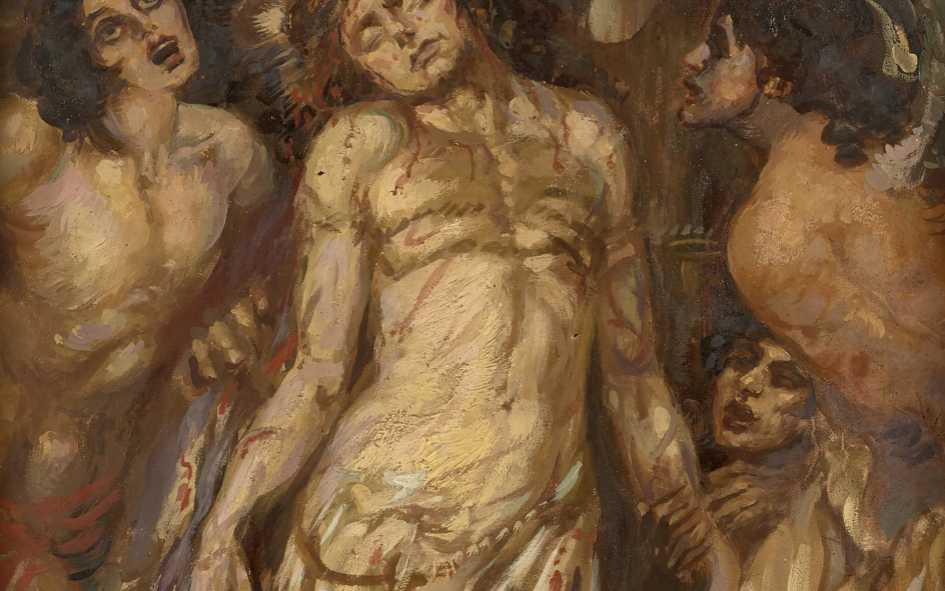
Peintre belge du XIXème siècle, Henry de Groux (1866-1930) est associé au mouvement symboliste.
Membre du groupe artistique “Les XX”, le peintre critique la société de son époque et les injustices sociales qu’elle subit. Ainsi, Henry de Groux est une figure majeure de l’art du XIXème siècle.
Si vous détenez une œuvre réalisée par l’artiste Henry de Groux ou d’après son travail et que vous souhaitez connaître sa valeur, nos experts et commissaires-priseurs agréés par l’État vous aiguilleront.
Nos spécialistes réaliseront une expertise gratuite de votre œuvre, et vous transmettront une estimation précise de sa valeur sur le marché actuel.
Par la suite, si vous désirez vendre votre œuvre, nous vous orienterons vers le meilleur dispositif possible pour en obtenir un prix optimal.
Cote et valeur de l’artiste
Par leurs thèmes peu communs, les œuvres d’Henry de Groux sont assez populaires sur le marché de l’art. Ses représentations qualifiées comme historiques sont les plus prisées par les collectionneurs et peuvent atteindre des dizaines de milliers d’euros aux enchères.
Le prix auquel ses œuvres se vendent s’échelonne entre 10 et 37 000€, un delta considérable mais qui en dit long sur la valeur qui peut être attribuée aux œuvres de l’artiste.
En témoigne dessinThe Exceptional Bernard De Leye Collection,adjugé 37 000 € par la maison de vente allemande Lempertz en 2021.
Ordre de valeur allant du plus basique au plus prestigieux
Technique utilisée | Résultat |
|---|---|
Estampe - multiple | De 10 à 5 000 € |
Sculpture - volume | De 150 à 13 000 € |
Huile sur toile | De 90 à 35 000 € |
Dessin - aquarelle | De 25 à 37 000 € |
Réponse en - de 24h
Style et technique de l’artiste Heny de Groux
Opposé aux avant-gardes de son époque et aux mouvements émergents tels que le cubisme, le dadaïsme ou le futurisme, Henry de Groux se distingue par un attachement profond au romantisme.
Admirateur fervent de Delacroix et de Géricault, il puise dans leur héritage une esthétique empreinte d’idéalisme et de grandeur.
Ses compositions picturales, souvent dramatiques et expressives, témoignent d’un goût pour les thèmes héroïques et les visions apocalyptiques, où les émotions intenses dominent.
Parallèlement à la peinture, De Groux s’illustre également dans la sculpture, où il exprime une sensibilité similaire. Fortement influencé par la littérature symboliste, il crée des portraits imaginaires de figures mythiques et littéraires qu’il admire profondément, tels que Baudelaire, Dante ou encore Napoléon.
Ces œuvres incarnent une vision idéalisée et introspective, fusionnant l’hommage personnel à une recherche esthétique ambitieuse.
L’artiste explore également des thèmes historiques et mystiques, notamment à travers des représentations saisissantes de l’histoire byzantine, qu’il réinterprète avec une intensité presque visionnaire.
Ses scènes, souvent peuplées de foules tourmentées et d’individus aux visages torturés, baignent dans une atmosphère de chaos, où l’hystérie collective rencontre une violence quasi transcendantale.
Les tourments qu’il dépeint, tant physiques que spirituels, traduisent une fascination pour les limites de l’âme humaine face aux épreuves, tout en reflétant ses propres angoisses existentielles.
Henry de Groux incarne ainsi une vision artistique où l’exaltation du sublime romantique et la puissance narrative s’entrelacent, faisant de lui une figure à part, résolument tournée vers un passé idéalisé dans un monde en mutation.
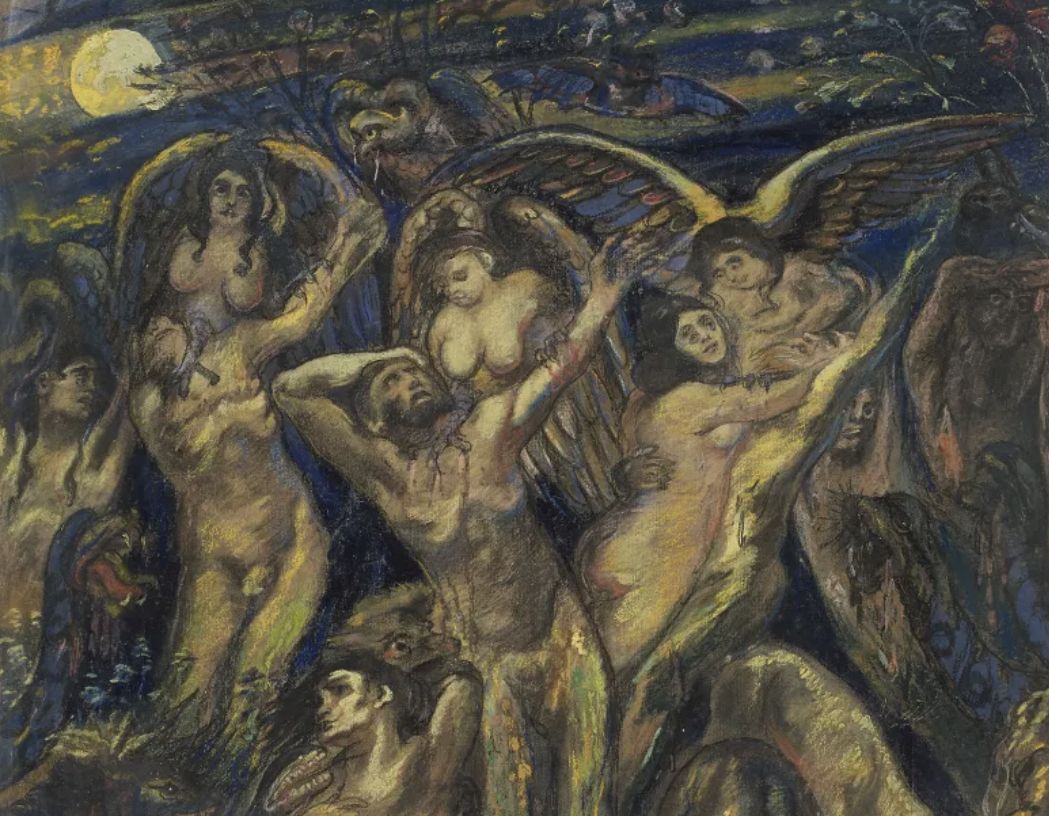
La vie de Henry de Groux
Henry de Groux, né à Bruxelles en 1866, est le fils du peintre symboliste Charles de Groux, dont il hérite l’attrait pour les sujets expressifs et chargés d’émotion.
Très jeune, il montre un talent précoce pour le dessin et la peinture, ce qui l’amène à intégrer l’Académie royale des Beaux-Arts de Bruxelles.
Rapidement, il se distingue par une personnalité flamboyante et rebelle, souvent en conflit avec ses contemporains.
Refusant de se plier aux normes académiques et aux courants avant-gardistes émergents, il s’inscrit dans une tradition romantique et symboliste, où l’exaltation des émotions et la quête de l’idéal prédominent.
Au cours de sa carrière, il s’installe à Paris, où il côtoie les cercles intellectuels et artistiques de la fin du XIXᵉ siècle.
Prolifique, il expose régulièrement ses œuvres dans des salons prestigieux, mais ses positions tranchées et son tempérament fougueux lui valent autant d’admirateurs que de détracteurs.
Henry de Groux s’impose comme un artiste engagé, marqué par une fascination pour les grandes figures historiques et littéraires, ainsi que par une sensibilité exacerbée face aux bouleversements de son époque.
Sa vie personnelle, marquée par des périodes d’instabilité et de crises, transparaît dans ses œuvres, où il exprime ses tourments intérieurs avec une intensité inégalée.
Jusqu’à sa mort en 1930, il reste fidèle à son esthétique romantique et à son indépendance farouche, laissant derrière lui une œuvre foisonnante et profondément ancrée dans une vision tragique et sublime de l’humanité.
Focus sur Le Christ aux outrages, Henri de Groux
L’œuvre “Le Christ aux outrages” de Henry de Groux illustre magistralement la vision tragique et intense qui caractérise son art.
Ce tableau, réalisé en 1891, s’inscrit dans une tradition symboliste où la puissance de l’image transcende la simple narration biblique pour atteindre une dimension universelle et intemporelle.
Au centre de la composition, le Christ, vêtu d’un simple manteau rouge, semble presque écrasé par une foule menaçante. Le traitement des figures qui l’entourent, aux visages convulsés et aux postures chaotiques, reflète une humanité tourmentée, prise dans une violence collective aveugle.
De Groux adopte une palette sombre, dominée par des noirs profonds et des rouges éclatants, conférant à la scène une intensité dramatique.
Les coups de pinceau nerveux et parfois hachurés témoignent d’un geste pictural habité, presque frénétique, qui amplifie l’émotion véhiculée par l’œuvre.
La lumière, quant à elle, joue un rôle fondamental : elle éclaire le Christ d’une manière presque irréelle, créant un contraste saisissant avec l’ombre oppressante qui enveloppe la foule.
Ce clair-obscur, inspiré des maîtres baroques tels que Caravage, renforce l’impression d’une lutte entre le divin et le profane, entre la spiritualité et la barbarie.
Plus qu’une simple scène religieuse, “Le Christ aux outrages” traduit l’obsession de l’artiste pour les questions existentielles et morales.
En mettant en lumière la souffrance individuelle face à la cruauté collective, Henry de Groux interroge la condition humaine dans toute sa complexité.
Ce tableau, à la fois bouleversant et captivant, reste l’un des témoignages les plus éloquents de sa quête artistique et spirituelle.
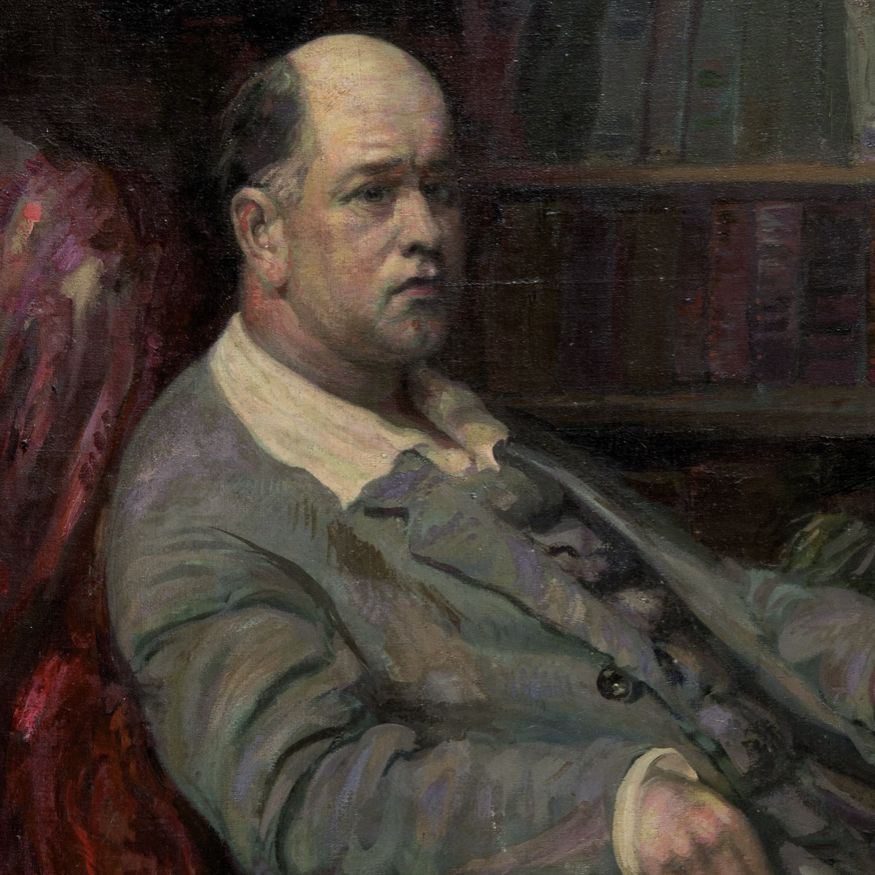

L’héritage de Henry de Groux
L’héritage de Henry de Groux repose sur sa capacité à cristalliser, dans ses œuvres, les tumultes et les angoisses d’une époque en mutation profonde.
Figure marginale, souvent en opposition aux courants dominants tels que le cubisme ou le futurisme, il incarne un romantisme tardif teinté de symbolisme.
Sa peinture, marquée par des scènes empreintes de chaos et d’exaltation, révèle une sensibilité rare à la condition humaine et à ses tourments.
En refusant les conventions de son temps, De Groux lègue une œuvre d’une intensité saisissante, où le geste pictural traduit une urgence émotionnelle.
Au-delà de la peinture, ses sculptures et dessins témoignent également de sa fascination pour les figures héroïques et les thèmes mystiques.
Admirateur de Delacroix et de Géricault, il a su reprendre l’héritage romantique tout en y insufflant une force visionnaire qui inspirera certains artistes symbolistes et expressionnistes.
Aujourd’hui, l’œuvre de De Groux est reconnue comme un témoignage puissant de la fin de siècle, un miroir des tensions sociales et spirituelles qui ont traversé son époque.
Si son nom demeure moins célèbre que celui de ses contemporains, sa production influence encore ceux qui cherchent à exprimer, par l’art, les profondeurs insondables de l’expérience humaine.
À travers ses visions tourmentées et ses explorations esthétiques, Henry de Groux laisse une empreinte singulière, celle d’un artiste en quête perpétuelle de vérité et d’émotion.
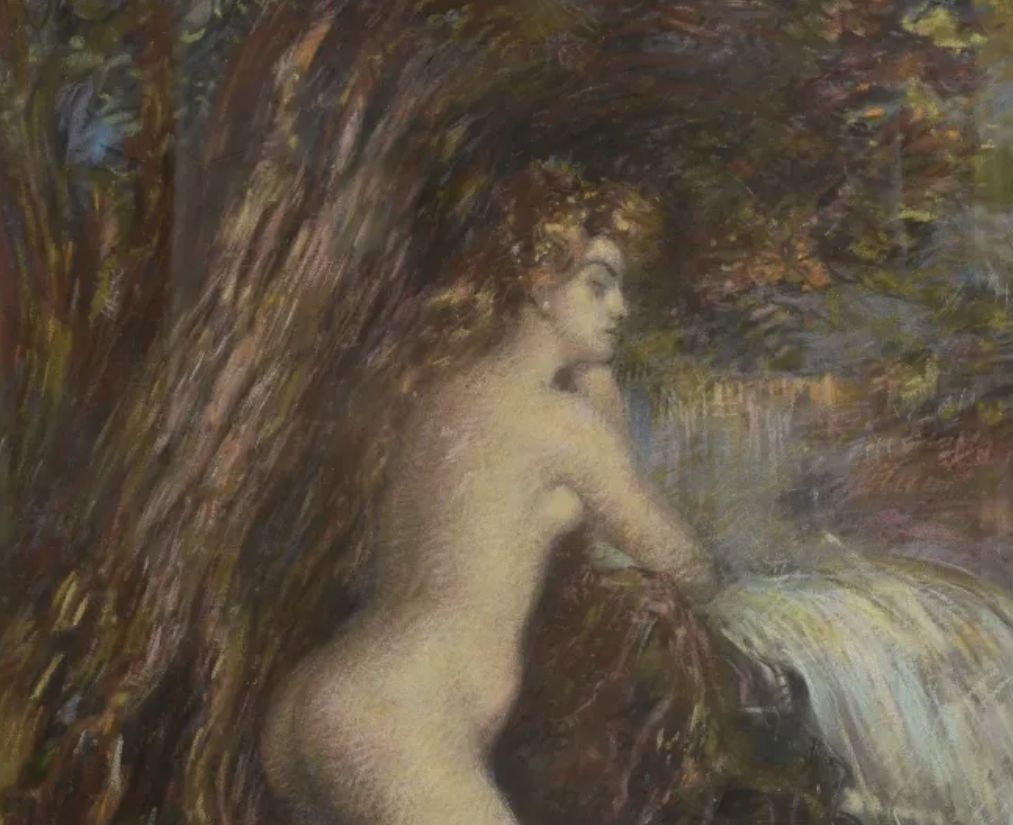
La cote de Henry de Groux sur le marché des enchères
La cote de Henry de Groux sur le marché des enchères reflète l’intérêt croissant pour cet artiste atypique, souvent perçu comme un maillon entre le romantisme tardif et le symbolisme, à l’instar de Gustave Moreau ou Odilon Redon. Longtemps éclipsées par les figures majeures de son époque, ses œuvres séduisent aujourd’hui les collectionneurs attirés par leur intensité émotionnelle et leur richesse narrative.
Ses grandes compositions picturales, telles que La Guerre ou Le Christ aux outrages, atteignent des prix notables lorsqu’elles apparaissent sur le marché, rivalisant parfois avec celles de Félicien Rops pour leur force provocatrice ou de Jean Delville pour leur dimension mystique et transcendante.
Les dessins de De Groux, empreints de nervosité et de densité, évoquent les études de Théophile Steinlen ou les croquis tourmentés de James Ensor.
Ces pièces, témoins privilégiés de son processus créatif, trouvent un public fidèle parmi les amateurs de symbolisme et d’art graphique du tournant du siècle.
Ses sculptures, bien que rares, se situent dans la lignée de l’expressivité de Carriès ou des figures héroïques de Rodin, ce qui renforce leur attrait sur le marché.
Si ses peintures monumentales peuvent atteindre plusieurs dizaines de milliers d’euros, les pièces plus modestes, comme de petites études ou lithographies, restent accessibles, attirant un public plus large, à l’image des œuvres d’Alphonse Osbert ou Eugène Carrière.
L’intérêt accru des institutions pour son œuvre, combiné à des expositions rétrospectives, conforte sa reconnaissance progressive.
Ainsi, Henry de Groux, autrefois marginalisé, s’impose peu à peu aux côtés de ses contemporains comme une figure incontournable pour les amateurs de romantisme visionnaire et de symbolisme tourmenté.
Sa signature
Les œuvres d’Henry de Groux ne sont pas toutes signées.
Même s’il y existe des variantes, voici un premier exemple de sa signature:

Expertiser votre bien
Si vous êtes propriétaire d'une œuvre d’Henry de Groux, n'hésitez pas à solliciter une évaluation gratuite en remplissant notre formulaire en ligne.
Un membre de notre équipe, composée d'experts et de commissaires-priseurs agréés, vous contactera pour vous fournir une estimation de la valeur marchande de votre œuvre.
Si vous envisagez de vendre votre œuvre, nos spécialistes vous guideront également à travers les différentes alternatives disponibles pour obtenir le meilleur prix possible, en tenant compte des tendances du marché et des spécificités de chaque œuvre.
Réponse en - de 24h
A découvrir dans la même thématique
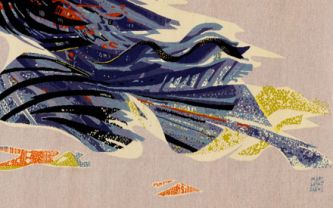
Cote et valeur des oeuvres de Marc Saint Saëns
Marc Saint Saëns est un peintre et cartonnier du XXème siècle, qui a du succès aux enchères. Ses tapisseries sont prisées et ont une cote stable.
En savoir plus >

Cote et valeur des oeuvres, dessins, peintures de Albert Mar...
Albert Marquet est un peintre du XXème siècle influencé par l'impressionnisme qui a produit des oeuvres et dessins qui sont côtés aux enchères.
En savoir plus >
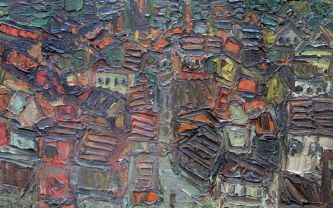
Cote et valeur 2024 des tableaux, dessins, peintures de Andr...
André Cottavoz est un artiste sanziste du XXème siècle qui a produit des oeuvres dont la cote et la valeur sont élevées aux enchères.
En savoir plus >
Site sécurisé, anonymat conservé
Commissaire-priseur et expert agréé par l'État
Estimations gratuites et certifiées
